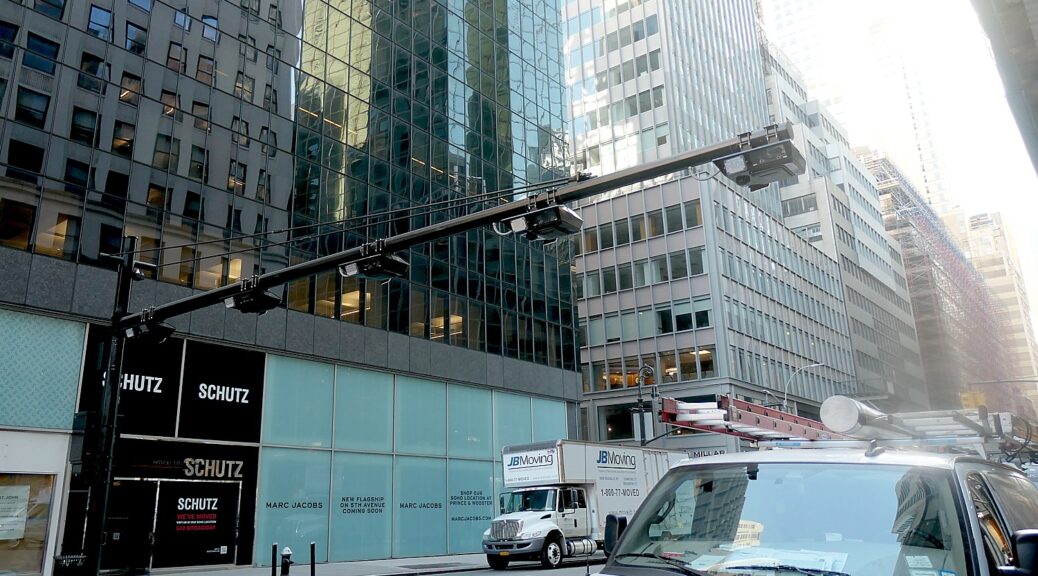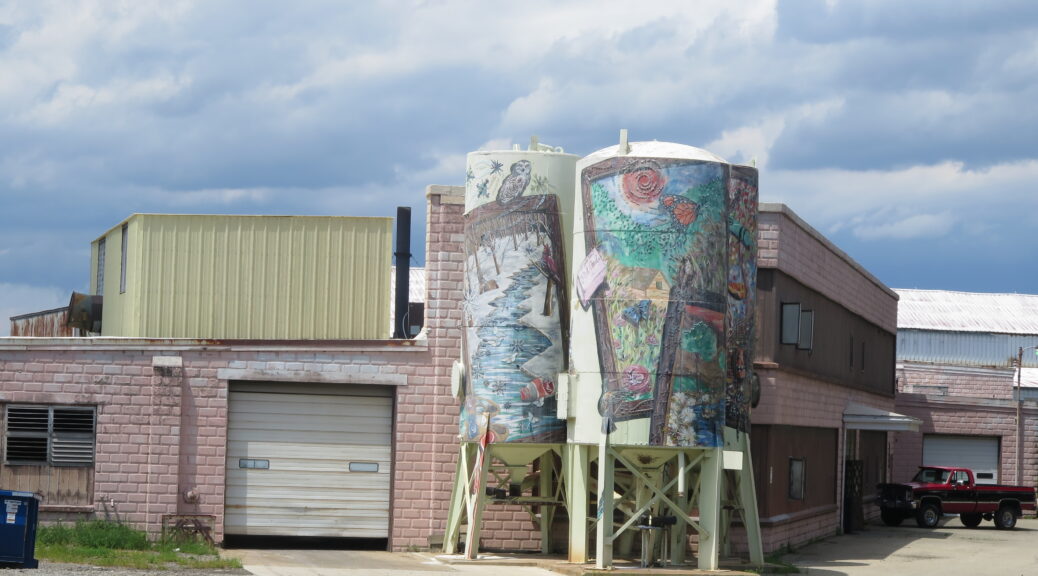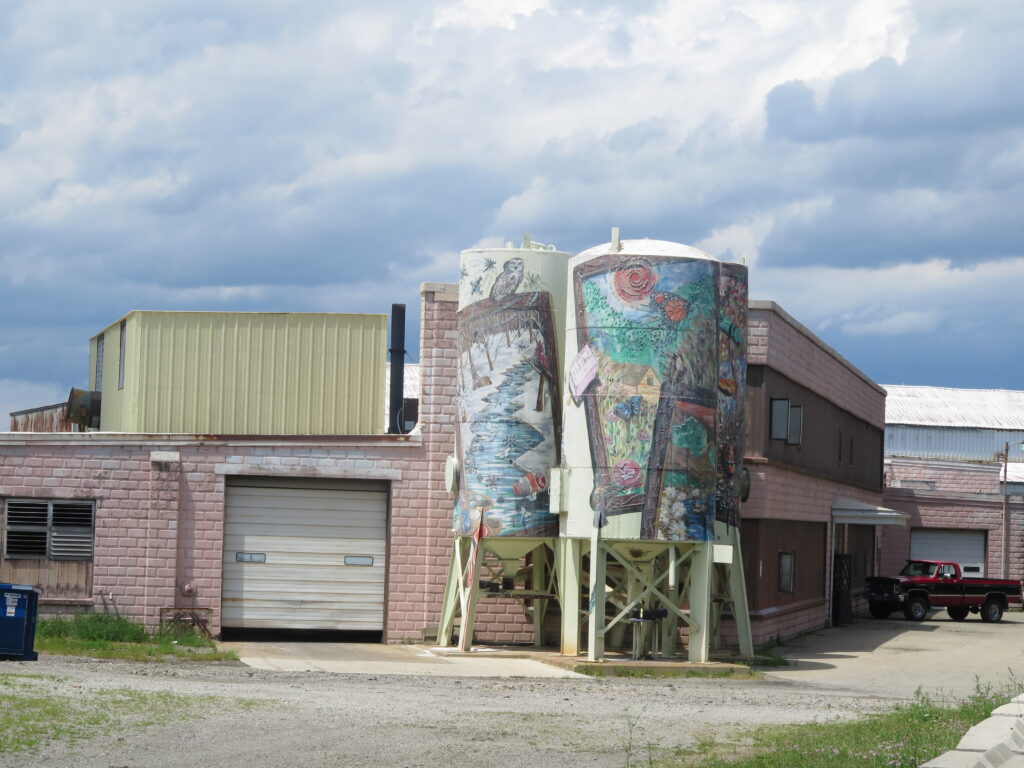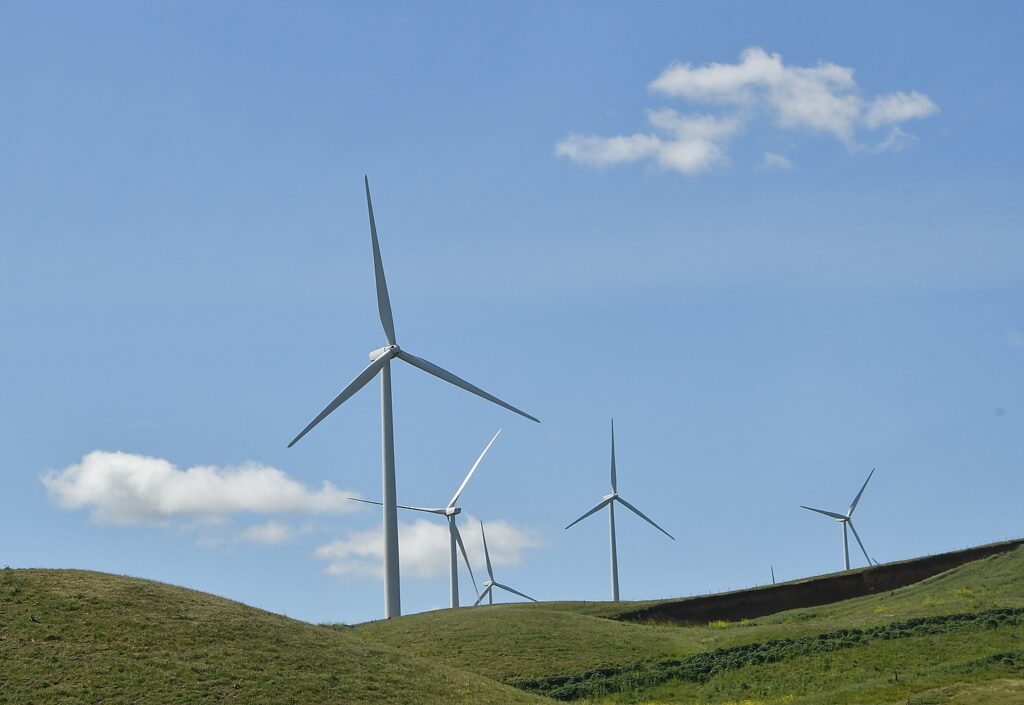The U.S. Nationally Determined Contribution (NDC) is an economy-wide, all greenhouse gas target of reducing net emissions by 61-66 percent below 2005 levels in 2035
The emissions reduction strategy includes leveraging landmark investments from the Inflation Reduction Act and Bipartisan Infrastructure Law, complemented by federal standards; coordinating with local, state, Tribal, and territorial governments; and mobilizing private capital
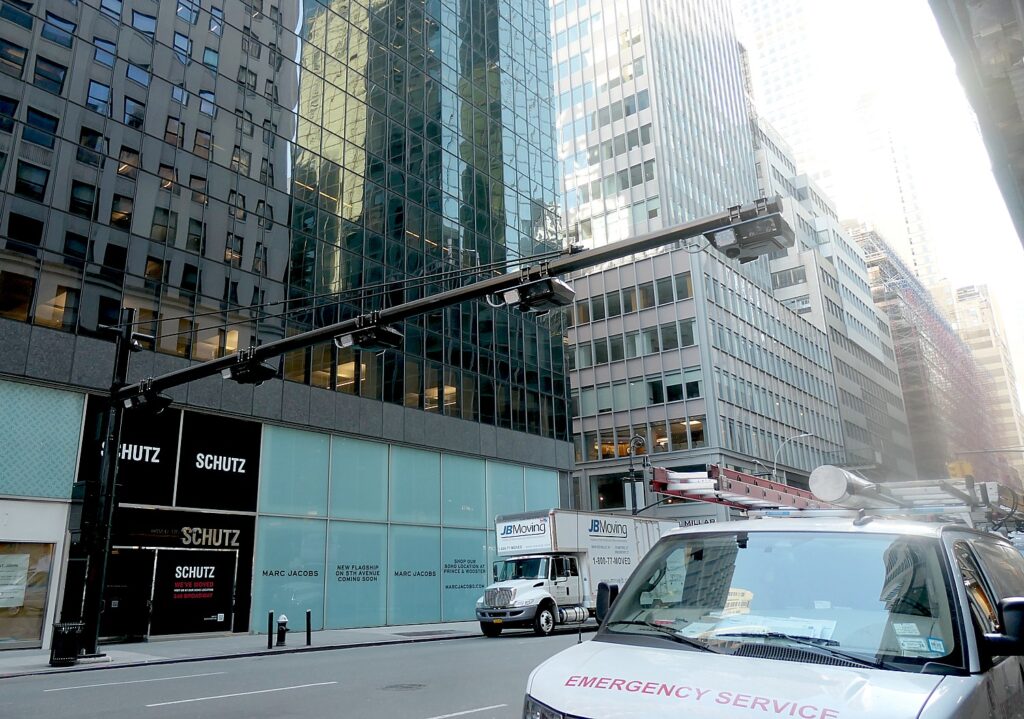
In 2015, the world came together to finalize the Paris Agreement, an historic agreement joined by nearly every country in the world to address the climate crisis and protect the planet for future generations. On Day One of his Administration, President Biden fulfilled his promise to rejoin the Paris Agreement and set a course for the United States to tackle the climate crisis at home and abroad. In 2021, pursuant to the terms of the Paris Agreement, President Biden submitted a nationally determined contribution (NDC) with a target of reducing U.S. greenhouse gas emissions 50-52 percent from the 2005 baseline in 2030.
Today, as the United States continues to accelerate the transition to a clean energy economy, President Biden is announcing a new climate target for the United States: a 61-66 percent reduction in 2035 from 2005 levels in economy-wide net greenhouse gas emissions. It keeps the United States on a straight line or steeper path to achieve net-zero greenhouse gas emissions, economy-wide, by no later than 2050. In connection with this announcement, the United States is making a formal submission of this new target to the United Nations Climate Change secretariat as its next NDC under the Paris Agreement.
To develop the U.S. 2035 NDC, the Biden-Harris Administration analyzed how every economic sector – power generation, buildings, transportation, industry, agriculture and forestry– can spur innovation, unleash new opportunities, drive competitiveness, and cut pollution. Additionally, the United States anticipates, as part of achieving its 2035 NDC emissions target, methane reductions of at least 35 percent from 2005 levels in 2035. Cutting methane emissions is among the fastest ways to reduce near-term warming and is an essential complement to CO2 mitigation.
This 2035 NDC aligns with President Biden’s target of a net zero greenhouse gas economy no later than 2050 and marks an ambitious capstone to President Biden’s climate legacy, focused on investment, innovation, creating millions of good-paying and union jobs, building the clean energy economy of the future, reducing costs for all Americans, advancing environmental justice, and improving the health and security of communities across America. There are multiple paths to reach these targets, and U.S. Federal, state, local, territorial, and Tribal governments have numerous tools available to work with civil society and the private sector to mobilize investment in the years ahead while supporting a stronger, fairer economy.
Momentum from President Biden’s Climate and Economic Agenda
Since President Biden announced the 2030 NDC in April 2021 to reduce emissions 50-52% by 2030, the United States has designed and implemented a historic climate strategy that leverages emissions reduction and economic growth in every region of the country. Advanced through thousands of policies and actions undertaken by federal, state, territorial, Tribal, and local governments, the strategy includes passage of the landmarks Bipartisan Infrastructure Law (BIL) and the Inflation Reduction Act (IRA), paired with strategic implementation of a regulatory agenda to ensure emissions reductions across every sector of the economy. This approach has equipped federal, state, territorial, Tribal, and local governments with additional resources and regulatory certainty to partner with the private sector to grow a new clean energy economy that benefits American workers and consumers. Implementation of this broad and comprehensive strategy has already led to more than $450 billion of private sector investment in domestic clean energy and manufacturing projects. This progress will accelerate as the Biden-Harris climate agenda continues to drive a wide range of investments in clean energy deployment and manufacturing in the years ahead. Examples include:
- Arizona has added over 370,000 new jobs, and unleashed more than $120 billion in private sector investment. Investments include $5.5 billion to build a battery facility outside Phoenix that will produce batteries for 350,000 electric vehicles per year.
- California has added over two million new jobs and more than $45 billion in private sector manufacturing and clean energy investment, including a $4 billion Gigafactory to produce lithium-ion batteries in Imperial Valley.
- Georgia has added nearly half a million new jobs and mobilized more than $40 billion in private sector investment. Qcells is investing $2.5 billion to expand its solar panel and component manufacturing capacity in Dalton and Cartersville.
- Maryland has added over 160,000 new jobs, and attracted more than $2.7 billion in private sector investment, including a $350 million investment from Constellation Energy to increase the output and lifespan of its renewable energy portfolio.
- Pennsylvania has added more than 560,000 new jobs and unleashed nearly $4.3 billion in private sector investment, including a $500 million investment by Eos Energy Enterprises to expand battery manufacturing operations in Turtle Creek, supported by a loan guarantee from DOE’s Loan Programs Office.
- Wisconsin has added more than 188,000 new jobs and $5.4 billion in private sector manufacturing and clean energy investments, including $426 million for the state’s first large-scale solar and battery storage project outside Milwaukee.
These investments and many more tell a clear story: the clean energy revolution is being built in America, and that will not be reversed.
Fundamental Economic and Technological Trends
Over the past four years the prices of clean energy generation and infrastructure have fallen dramatically. President Biden’s economic agenda, supported by complementary subnational government actions and private sector innovation, has reshaped the energy landscape now and for future generations so that American consumers and workers will benefit, especially in energy communities that have historically powered our nation. Along with the boom in domestic investments, technological advances across the energy sector are also making the U.S. clean energy revolution irreversible, including:
- Clean Energy Generation. The levelized cost of utility-scale solar photovoltaic (PV) and onshore wind are dropping rapidly. In 2024, estimates for utility-scale solar PV and onshore wind are as low as $29 per megawatt hour and $27 per megawatt hour, respectively. On a levelized-cost basis, utility-scale solar is now broadly on par with fossil fuel sources, even before accounting for the environmental and public health benefits. A recent analysis indicates that 99 percent of all U.S. coal plants are more expensive to continue running than to replace with solar, wind, and energy storage resources. Geothermal power generation capacity is also accelerating, with 203 megawatts commissioned globally in 2023, up 12 percent from 2022. Recent technological advances, particularly in drilling, indicate the industry is on track to an average cost of $60-70/MWh by 2030 and $45/MWh by 2035. New enhanced geothermal capacity is already slated to meet the clean electricity demands of new industries. And the recent completion of the Vogtle nuclear power plant in Georgia, the nation’s first new nuclear reactors in over 30 years, as well as planned revitalizations of existing reactors, progress on advancedreactor technologies, and new private sectordemand, are all signs of further progress expanding nuclear power capacity ahead.
- New and Better Transmission. Expanding and enhancing the U.S. transmission system is critical to the nation’s resilience and national security. Significant expansions of new and upgraded transmission lines by public and private sector entities, including SunZia Transmission in New Mexico, will facilitate the transmission of clean energy across the United States. Meanwhile, a new generation of modern grid technologies provides a significant opportunity to achieve power system capacity expansion, including through high-performance conductors that can carry two times (or more) the amount of power of conventional transmission wires, as well as grid enhancing technologies that maximize electricity transmission across the existing system through a family of technologies that includes sensors, power flow control devices, and analytical tools.
- Battery Storage. Utility-scale battery storage has the potential to provide much-needed flexibility that supports renewable energy sources, and helps address grid infrastructure challenges. Between 2010 and 2023, the cost of utility-scale battery storage projects declined by 89%, to $273 per kilowatt hour, driven by improvements in manufacturing, materials efficiency, and manufacturing processes. Storage capacity additions also increased significantly, with additions of 22 gigawatt hours (GWh) in 2023. As the private sector continues to invest in new battery technologies and manufacturing processes, battery storage costs will continue to decline, supporting the clean energy economy of the future.
- Energy Efficiency. Improvements in energy efficiency can cut pollution and save Americans on their energy and water bills. The Biden-Harris Administration has strengthened energy efficiency standards to save households and businesses money, with standards updated by DOE for dozens of appliances expected to provide nearly $1 trillion in consumer savings over 30 years, saving the average household more than $100 a year while also reducing greenhouse gas emissions by more than 2 billion metric tons. Efficient equipment such as heat pumps powered by clean electricity are already making heating, cooling, and hot water more affordable for a growing number of American homes. 2022 marked the first year that heat pump sales outpaced fossil fuel furnaces in the US; in 2023, heat pumps outsold gas furnaces by 27 percent, demonstrating the technology’s growing popularity with consumers. When paired with energy efficiency improvements, like insulation, heat pumps lower the cost of heating and cooling, while improving indoor and outdoor air quality.
- New and Better Transmission. Expanding and enhancing the U.S. transmission system is critical to the nation’s resilience and national security. Significant expansions of new and upgraded transmission lines by public and private sector entities, including SunZia Transmission in New Mexico, will facilitate the transmission of clean energy across the United States. Meanwhile, a new generation of modern grid technologies provides a significant opportunity to achieve power system capacity expansion, including through high-performance conductors that can carry two times (or more) the amount of power of conventional transmission wires, as well as grid enhancing technologies that maximize electricity transmission across the existing system through a family of technologies that includes sensors, power flow control devices, and analytical tools.
- Clean Steel and Clean Concrete. Producing steel and concrete, fundamental building blocks of the modern economy, accounts for more than 15 percent of global greenhouse gas emissions. Clean steel and concrete are already being produced in the United States. Major steelmakers are now using Inflation Reduction Act investments to build and retrofit American steel facilities to produce cleaner steel. Innovative low carbon methods for concrete production can reduce emissions by eliminating the need for high temperatures or through the use of alternative low carbon feedstocks. These innovative concretes are more durable and stronger than conventional concrete, improving the performance of infrastructure investments and resulting in long term savings. As clean hydrogen and clean electricity prices continue to fall, producers will be able to further slash emissions using these cleaner inputs.
- Clean Hydrogen. Hydrogen has the potential to reduce emissions across a host of sectors, including transportation and heavy industry. Key cost drivers of green hydrogen production, including the capital expenditure for electrolyzers and the price of renewable energy, are expected to decline in years ahead due to economies of scale, delivering green hydrogen at a lower price point. Combined, these two cost declines could translate to a significant reduction in green hydrogen production costs, from $3-6 per kilogram today to $1.50 – 2 by 2035.
- Clean Cars and Trucks. Electric vehicles (EVs) are already selling at a record pace in the United States, supported by falling component prices as well as fuel and maintenance cost savings for consumers. From 2018 to 2022, the sales-weighted average price of electric cars decreased, and the price gap between internal combustion vehicles and EVs has begun to close. Through 2035, falling EV component prices will drive down the purchase price for EVs and bring new customers to the EV market. For instance, battery prices are set to fall by as much as 50 percent through 2026 thanks to improved technology and expanded production of key inputs. Federal standards support these market developments: the strongest-ever national pollution standards for passenger cars and heavy-duty vehicles are providing certainty for the automobile industry, catalyzing private investment, creating good-paying union jobs, improving public health, and expanding consumer choice in clean vehicles.
- Federal Sustainability. With broad support from America’s manufacturers, clean energy developers, labor organizations, business leaders, states, and communities, the Federal Government’s 300,000 buildings, 600,000 vehicles, and $750 billion in annual procurement power will continue to be more sustainable and resilient while supporting good jobs, cutting costs, and saving taxpayers money.
Action and Leadership from state, local, Tribal, and territorial governments
State, local, Tribal, and territorial governments in the United States have a long history of climate leadership that has laid the groundwork for subsequent federal action, including the Inflation Reduction Act. Many critical climate levers, especially in the transportation, electricity, and building sectors, lie largely within the domain of these governments. In the years ahead, leveraging and expanding the new clean energy economy enabled by the Biden-Harris Administration’s policies and bolstered by strong economic tailwinds supporting clean energy, these governments will ensure that the United States remains all-in on climate action. States, territories, cities, counties, and Tribal governments together have the capacity to step in and deliver on climate ambition. In the years ahead, we expect that subnational and Tribal governments will adopt new and strengthen existing climate-forward policies such as:
- Climate Action Plan Implementation: Through support from the Inflation Reduction Act, more than 45 states and more than 200 Tribes, territories, and metro areas have now developed their own Climate Action Plans, representing a historic set of opportunities for subnational climate progress across sectors. More than $4 billion of Climate Pollution Reduction Grants awarded by the Biden-Harris Administration will also advance 59 implementation projects across 30 states, 33 Tribal Nations, and 1 territory to reduce climate pollution from every sector of the economy. Many of these projects can be expanded and provide examples that other states, local governments, Tribes, and even businesses can replicate in their work to tackle the climate crisis.
- Innovative Solutions to Cut Pollution from the Existing Transportation Systems. California, Washington, and Oregon have developed and implemented, or started to implement, programs that reduce emissions from the transportation sector through a predictable, market-based approach, generating climate and local-air quality benefits for residents and communities. New York City and State adopted and implemented the country’s first-ever congestion pricing program, which will reduce climate pollution and provide a stable funding source for mass transit. Other states have the opportunity to build on these successful policy initiatives in their own jurisdictions.
- Renewable Portfolio Standards (RPSs) and Clean Energy Standards (CESs). Today, twenty-five states and the District of Columbia have set RPSs and eight others have adopted CESs, which will increase the generation of low- and zero-carbon electricity. Adoption of these standards by additional states, as well as the strengthening of existing standards, provides significant upside for reducing climate pollution.
- Building Energy Codes. Many subnational governments have already adopted or are in the process of adopting the most up-to-date energy codes to ensure new building construction is energy efficient and lowering emissions for years to come. Subnational governments are also reducing energy costs and emissions in existing buildings, with almost 25 percent of commercial buildings subject to a building performance standard or located in a community with plans to adopt building performance standards.
- State Procurement of Low-Carbon Materials. The Biden-Harris Administration’s landmark Federal Buy Clean Initiative leverages the sway of the U.S. government, as the largest purchaser on Earth, to spur demand for clean American manufacturing of materials that form the bedrock of our economy. Thirteen states have joined the Federal-State Buy Clean Partnership and committed to prioritizing efforts that support procurement of lower-carbon infrastructure materials in state-funded projects. These states can continue to work together to send a clear, harmonized demand signal to the marketplace for the long-term decarbonization of essential industries.
- Financing Climate Solutions. With support from the Inflation Reduction Act’s Greenhouse Gas Reduction Fund (GGRF), the national network for financing clean energy and climate solutions across sectors is larger than ever before. The National Clean Investment Fund awardees are establishing national clean financing institutions that deliver accessible and affordable financing for clean technology projects nationwide, and the Clean Communities Investment Accelerator awardees are establishing hubs that provide funding and technical assistance to community lenders working in low-income and disadvantaged communities.
- State and Regional Efforts to Cap Emissions. 15 states and Puerto Rico have binding economy-wide emissions targets in law, covering more than 115 million Americans across the country. Voters in Washington State recently upheld a groundbreaking law requiring companies to cut carbon emissions while investing in programs that benefit the public, such as habitat restoration and climate adaptation. This recent success builds on initiatives such as the Regional Greenhouse Gas Initiative (RGGI), a regional program that requires certain power plants to acquire allowances for every ton of CO2 emitted.
- Innovative Solutions to Cut Pollution from the Existing Transportation Systems. California, Washington, and Oregon have developed and implemented, or started to implement, programs that reduce emissions from the transportation sector through a predictable, market-based approach, generating climate and local-air quality benefits for residents and communities. New York City and State adopted and implemented the country’s first-ever congestion pricing program, which will reduce climate pollution and provide a stable funding source for mass transit. Other states have the opportunity to build on these successful policy initiatives in their own jurisdictions.
In the years to come, leadership will come from all across American society – cities and states, Tribes and territories, small and big businesses, working communities, individual Americans and the private sector working together to seize the economic opportunity, create jobs, and build the clean energy economy. This new clean energy economy, enabled by the forward-looking policies of this Administration, will continue to grow – and the United States will continue to create good jobs and cut carbon pollution right here at home.

